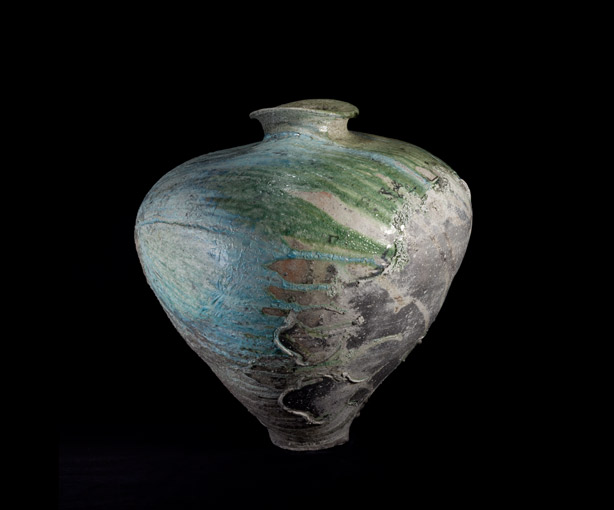
YUI TSUJIMURA
The New York art world has always had a predilection for the new and the avant-garde, for works that push boundaries and for artists proclaimed visionaries. This constant pursuit of change and revolution can have brilliant results, but a loss of historical context can be one of the most unfortunate consequences. Yui Tsujimura’s ceramics should serve as a refreshing corrective.
Tsujimura, who began by working for his father, famed potter Shiro Tsujimura, built himself a kiln in 2000 and has been producing works of striking complexity and arresting beauty ever since. Drawing on a history of thousands of years of Japanese ceramics, Tsujimura’s creations, both functional—solid vases, luminous plates, touchingly asymmetrical serving bowls—and purely aesthetic, reflect one of the longest artistic legacies on earth, an unbroken line of tradition and evolution stretching back to the Neolithic era.
Tsujimura’s works, most crafted from a mixture of clay from the towns of Shigaraki and Iga—both strongholds of pottery-making—and finished lightly with ash glazes, proved to be hypnotic and entrancing when collected together at the artist’s solo exhibition at the Upper East Side’s Koichi Yanagi Oriental Fine Arts, “Robust Vision in Clay, Ash, and Fire,” last summer. Each piece is gorgeously unique and evocative, a testament to the laborious and highly individualized creation process. Heavy lidded jars evoke the sturdy forms of the Momoyama period, while robust and voluptuous wheel-thrown vessels harken back to an even earlier time. Tsujimura’s works are obviously hand-crafted and carefully considered, a group of off-kilter forms that demonstrate a very human touch. Many pieces are crafted from thinly shaped clay, as per the sue ware tradition, that drooped and sagged under gravity’s pull; the final results are evocative of human fallibility and weakness. Several of the surfaces seem to burst in spots, like the skin of a peach being peeled back, revealing hidden inner depths. Tsujimura fired many of the pieces on their sides, leaving colors streaked horizontally around the curves where the pigments had trickled. The shades themselves are often almost-translucent shades of emerald and turquoise, the colors appearing like moving forms trapped under the sheen of the glaze.
The potter’s pieces serve as a progression, no doubt, with their candid forms and apparent intimacy and honesty. But ancient techniques and aesthetics find their way into his pieces nonetheless, as if to prove the impossibility of escaping the pressing weight of history and cultural inheritance. These are forms with relevance and immediacy, but also an underlying immortality. What’s new today will be old tomorrow, but creativity is timeless.

















